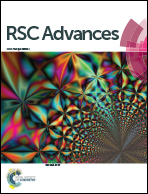Hybrid organic–inorganic membranes based on sulfonated poly (ether ether ketone) matrix and iron-encapsulated carbon nanotubes and their application in CO2 separation
Abstract
The need to reduce greenhouse gas emissions dictates the search for new methods and materials. Here, a novel type of inorganic–organic hybrid materials Fe@MWCNT-OH/SPEEK (with a new type of CNT characterized by increased iron content, 5.80 wt%) for CO2 separation is presented. The introduction of nanofillers into a polymer matrix has significantly improved hybrid membrane gas transport (D, P, S, and αCO2/N2), and magnetic, thermal, and mechanical parameters. It was found that magnetic casting has improved the alignment and dispersion of Fe@MWCNT-OH carbon nanotubes. At the same time, CNT and polymer chemical modification enhanced interphase compatibility and membrane CO2 separation efficiency. The thermooxidative stability, and mechanical and magnetic parameters of composites were improved by increasing new CNT loading. Cherazi's model turned out to be suitable for describing the CO2 transport through analyzed hybrid membranes. The comparison of the transport and separation properties of the tested membranes with the literature data indicates their potential application in the future and the direction of further research.



 Please wait while we load your content...
Please wait while we load your content...